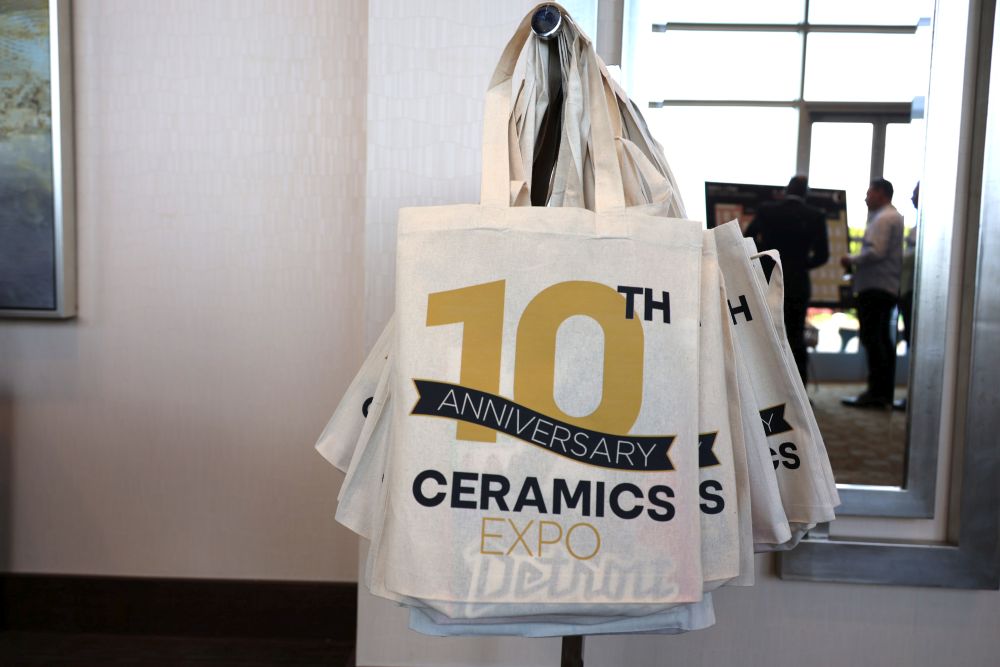
[Image above] Michael Pambianchi, research director of Glass Research at Corning Incorporated, discusses glass’s challenges in consumer electronics during Tuesday morning’s technical session on glass melting. Credit: ACerS
A couple months back, I promised you that the 75th GPC (75th Conference on Glass Problems) would be the place to be come November.
And it was.
The content-rich, technically oriented conference, organized by the Glass Manufacturing Industry Council (GMIC) and Alfred University, delivered—kicking off Monday at the Greater Columbus Convention Center in the heart of downtown Columbus. (Which will also play host to MS&T15—insert shameless plug to promote the meeting’s March 16 call for papers deadline. More info on its way soon at matscitech.org.)
In a conference first, the 75th GPC began with a well-attended joint symposium on “Energy Productivity as a Competitive Edge in Glass Manufacturing.”

Elizabeth Dutrow, director of ENERGY STAR Industrial Partnerships at the Environmental Protection Agency, speaks during the joint energy symposium on Monday. Credit: ACerS
GMIC executive director Robert Weisenburger Lipetz and Elizabeth Dutrow, director of ENERGY STAR Industrial Partnerships at the Environmental Protection Agency, welcomed attendees of the symposium, a collaborative effort between the two organizations. Talks by energy officers at some of the nation’s leading glass manufacturers, including Corning and PPG Industries, and the country’s top energy consultants (Garforth International, ENERGY STAR, Bremer Energy Consulting Services, and Duke University) followed.
The goal of the forum: How much energy does industry, specifically the glass industry, use, and how can it better align energy programs with long-term energy-efficiency and business outcomes? The (short) answer: Looking more strategically at energy by building and maintaining a successful corporate energy management (and, as a result, behavior change) program, benchmarking energy data, and identifying new opportunities for energy efficiency on and beyond the plant floor.
While they talked strategy, next door two short courses on the fundamentals of batch and furnace operations and glass furnace designs and furnace operation—taught by C. Philip Ross, president of Glass Industry Consulting International, and CelSian Glass & Solar B.V.’s senior consultants Andries Habraken and Oscar Verheijen, respectively—ran concurrently. Offsite, two dozen student participants toured the Owens Corning plant in nearby Newark, Ohio, which, with 1.5 million square feet of manufacturing, warehouse, and office space, is the world’s largest fiberglass insulation plant.

Attendees heard targeted talks on glass melting, forming, energy and environmental issues in glass manufacturing, refractories, sensors and controls, and modeling during Tuesday and Wednesday’s technical sessions. Credit: ACerS
The technical program continued Tuesday and Wednesday with technical sessions that brought 400-plus glass industry professionals together to listen to targeted talks on glass melting, forming, energy and environmental issues in glass manufacturing, refractories, sensors and controls, and modeling by a veritable who’s who in the glass manufacturing world. (See full list of speakers here).
In between breaks that were filled with high-energy conversations (and a few high-fives) as well as the swapping of business cards, attendees were able to see and speak with the more than 60 exhibitors who set up shop on the expo floor. The opportunities for networking and discussion stretched into the evening in the hospitality suites and salons hosted at the Hilton.

The exhibits were hopping, as participants lined up to see the latest and greatest in glass manufacturing technologies and services. Credit: ACerS
Things wrapped up Thursday afternoon, following the Hot Sensors Symposium on Instrumentation and Control Innovation in Glass Manufacturing symposium organized by GMIC. The day-long program included talks on the most recent and most-talked about technologies available to meet challenges in glass manufacturing, as well as a forum and roundtable discussion for pinpointing technologies that can advance sensor and control technologies.
Before this first-time attendee signs off, and leaves you with our complete photo and social coverage from this year’s meeting, let me encourage you to save the date for the 76th GPC, November 2–5, 2015, in Ohio’s Capital City. Hope to see you there!
Author
Jessica McMathis
Spotlight Categories
- Meeting Highlights


